Preamble
Well, this is certainly embarrassing. It's been almost a month since February's Next Fest event ended and I'm only now getting around to wrapping up my thoughts about the most prominent demos I played during the event. Since I published the first part to this series, some of the game's described in this post have released. Between getting a serious cold which has, as of the publishing of this blog, transitioned into a sinus infection, I haven't been in the best shape to be writing at my normal pace. Nonetheless, here's the second part to my series as well as a link to the first part if you missed it:
Rotwood
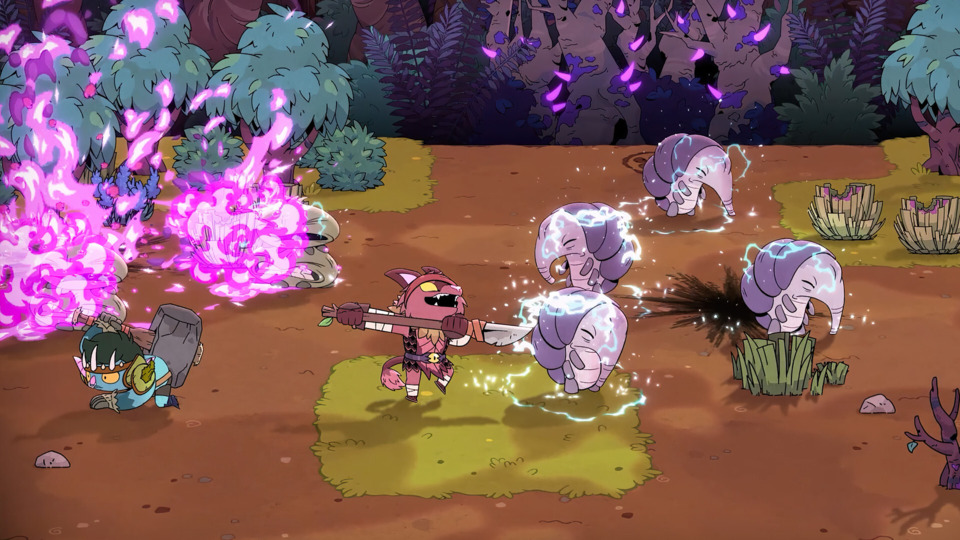
What is it?
Rotwood is a 1 to 4 player roguelike dungeon crawler with hack n' slash gameplay. It comes from Klei Entertainment, best known for Oxygen Not Included, Mark of the Ninja, and Don't Starve. Rotwood continues many of the graphical hallmarks of Klei Entertainment's earlier works. It features a pseudo-2D structure with you controlling 2D character portraits that still need to move up and down environments as if they have Y-axis and Z-axis movement. Think Don't Starve, but now it's an action RPG that features many of the same people who worked on that and Mark of the Ninja. This game combines Klei Entertainment's work on Don't Starve and the expected dungeon-based roguelike gameplay hooks, but Rotwood allows you to play with up to three additional companions. I could not check out that part of the game when I played its demo during Next Fest, but it is an intriguing premise. In terms of saving when playing with friends, I suspect it will be the same as how the multiplayer worked for Don't Starve Together in that your saves are attached to a host. When this host invites previous party members back to continue play sessions after a break, you pick up where you left off.
What's in the demo?
The demo for Rotwood features what I predict is the game's first "dungeon." You have a route to a final boss with plenty of forks that lead to randomized merchant and side quest placements. There are more dungeons beyond the starting forest, as it only took me about an hour to get to that dungeon's boss, though I was not successful in beating them. I also don't want to oversell the procedurally generated nature of Rotwood; after attempting to beat the game's boss, the merchants' placements did not deviate that much. But what did impress me, even after dying once or twice, was the depth of some of the weapon combos and synergies. As you encounter new weapon types, whether an ax, bow, or sword, they all have unique combos to discover, wherein your passive abilities and the character's weapon proficiencies work together to fill the field with damage-dealing attacks or projectiles. For example, in my first playthrough, I opted for an axe and discovered a fantastic combo with a cannon alt, which was a unique pickup, and after pressing one light attack followed by two heavy attacks, the canon would lob a trio of mortars. In my second and most successful playthrough, I created a "keep-away" style character that relied on projectiles and would even spew additional projectiles after dodging three times in a row. Finding new efficacious combat options is the best part of Rotwood, but much like any roguelike, you can't be too married to any of your favored choices for too long as they could be gone in a heartbeat, and Rotwood can be fickle.
The premise of the game is simple enough. You control a furry or scaly avatar decked out with starting equipment that you decide on at the start of the game. After creating a character, you learn about a forest that contains many riches as well as combat challenges, and similar to the works of Supergiant Games (i.e., Hades and Bastion), the game's dungeon features non-boss levels that spawn a finite number of enemies that you must clear out before moving on to the next level. Occasionally, you will have more than one option as to where you will go, and this will determine which merchants or sub-bosses you encounter during your journey. The game's roguelike element stems from when you lose equipment. Everything you bought during your trip disappears if and when that happens, though there are no hard caps on the number of lives you have with your playthroughs. It's a kinder version of Rogue Legacy in that your character will retain cosmetic changes, and any merchants you unlock in the game's hub world will persist. Still, when you respawn in the dungeon, it returns you to the same 1-1 level if you fail to defeat the final boss in that environment. Nonetheless, there are "chapters" in the game wherein particular boss fights act as capstones before you transition to a new environment or climactic change in the story.
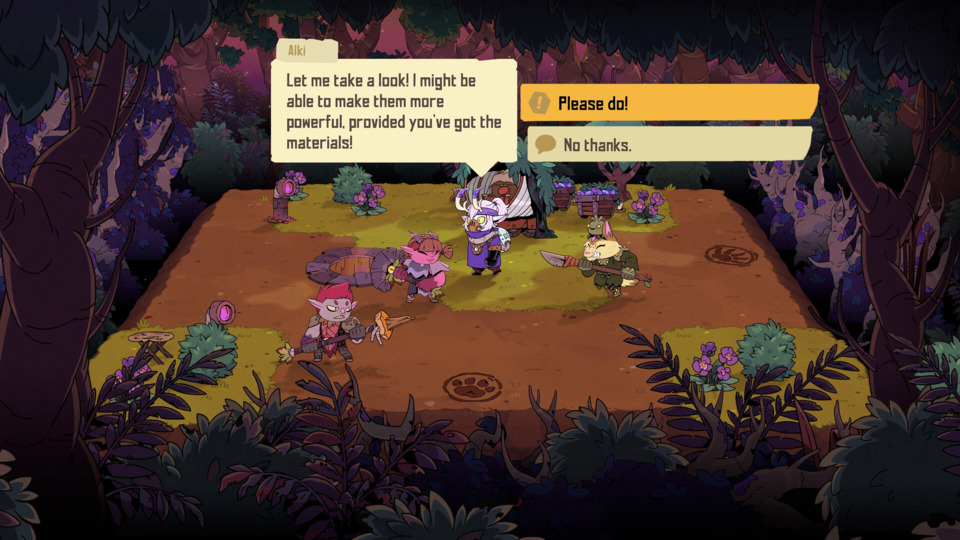
Will I buy the full game when it comes out?
Maybe. Though this game is more in Mento's wheelhouse, I'll consider it. I was never a fan of Don't Starve and am still not entirely sold on Rotwood's multiplayer element, which separates it from an incredibly crowded field of indie 2/2.5D roguelikes. It has a look, and I don't doubt that, but as is the case with many of Klei's recent works, I'm already concerned about balance. Yes, this was a demo and a work in progress. Nonetheless, I'm not alone in saying that entire weapon types and passive abilities are immediately BUSTED or completely inert. Part of that might be the nature of the beast, but the swings in Rotwood are WILD, and there's something about its bizarre difficulty spikes that got on my nerves. While attending the first boss, I picked up on some fun combos and laid waste to nearly everything during this trek. Then, there was a massive plant-like mini-boss almost entirely immune to the weapon I was sporting. I felt pantsed, and that just sucked. If you give me the option of relying on projectiles or axes and even have buffs and passive abilities to strengthen those options, designing encounters that essentially feel as if they are playing an Uno Reverse card downright knocks the wind out of my sails. I'm optimistic things might change, but Klei Entertainment has been a bit mum since debuting Rotwood's demo.
Serum
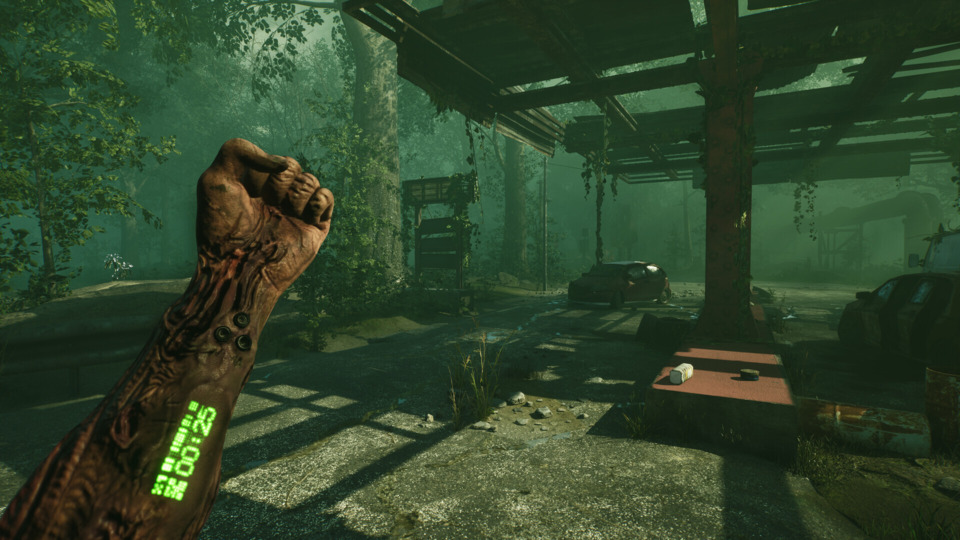
What is it?
Goodness, remember two Next Fests ago when almost every game demo being promoted was a survival crafting game in the mold of ARK: Survival Evolved? I sure do, and that's part of why I go out of my way to play at least one survival crafting game every Next Fest. After completely dominating the event for two years, the world is finally healing. Serum comes from first-time indie developer Game Island, whose expressed mission is to be a "Game Development Studio with a clear goal - creating the best possible survival games." Serum features an objective-based narrative-driven survival experience wherein your character requires a life-saving serum within a finite amount of time, or else they die. The game is a semi-open world but grounds your character and their ability to progress throughout it using a hub location in the form of a shack. In this derelict building, you can craft story-required items, raise plants, refine resources, and engage in all your usual survival crafting game staples.
What's in the demo?
The game starts with your character attempting to conduct an investigation who inadvertently finds themselves at the whims of an evil organization that has injected a virus into their body. This virus can only be staved off if you inject a serum into their veins every ten minutes, though that time increases as you upgrade the potion's potency via new crafting items. Of all things, and this is going to be a stretch, but this mechanic reminded me of Dead Rising 2, where you need to occasionally drop everything you were doing to remember to give your daughter some anti-zombie medicine, or else your game was effectively over. And that shit was annoying then, and it's STILL irritating as all HELL now! There was one time when I was looking over blueprints and thinking about crafting new items to better automate an aspect of my base. While scanning over my options and calculating the resources I would need to collect, I noticed the music was suddenly getting louder and more dramatic. Still, I thought it was a glitch because Serum already has some weird audio issues. Lo and behold, that's how the game warns you while you are in a menu or mid-action that your ass better be taking some serum or else you die! And guess what? I did not know that and died. It's a lesson I learned the hard way!
Beyond making a solid first impression with its lush forest and surprisingly multi-layered shack, most of your time involves scouring the surrounding environment for materials that net new serums and tools that allow you to unlock more areas. For example, you need to craft a blunt object to break crates and another to pry open gates, and having spare serums is necessary if you wish to make long treks. Likewise, while you can rely on the plants and objects surrounding your dwellings for the start of the game, you'll eventually exhaust these resources. You will ultimately need to grow plants using a hydroponics system and engage with the game's recycling/refining mechanic. It's nice that there's something built into this game to make sure you don't accidentally screw yourself over by expending natural resources down non-viable pathways. Only some things in this base are available in the demo, but there's enough to it, and its gimmicks give you a good sense of how its approach to crafting works. Finally, this is a survival game with a story, which I was not prepared for, given the genre generally doesn't care about storytelling. Serum does an admirable job directing you to new locations while an unseen omniscient voice speaks to you through a walkie-talkie. These new locations opt you into building specific items and unlocking further tools. They also reveal another layer of its mystery and build upon the game's theme of you being somewhere that is not what it seems.
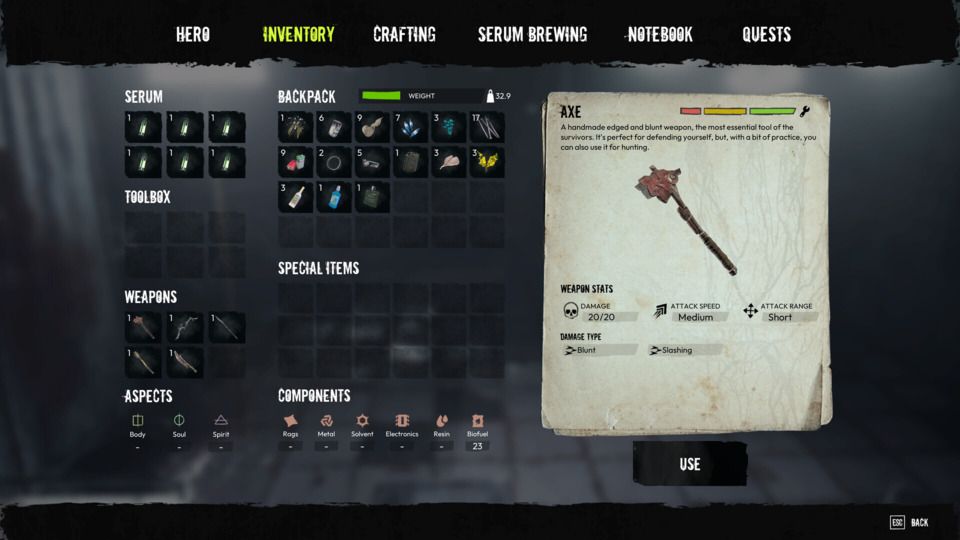
Will I buy the full game when it comes out?
No. First, this problem may have improved, but Serum was one of the worst-performing demos I encountered throughout February's Next Fest. Serum chugged and repeated audio clips, my character clipped through objects and platforms, and worse, after completing a mission as instructed, the task would not tick off on my objective list. Again, it's a demo, and the developers of Serum are not precisely a large team, but I struggled to play the demo for more than thirty minutes due to many of these technical issues. Second, needing to worry about a timer while performing the usual survival crafting gameplay loops holds zero water with me. I get you eventually get improved versions of the magical death-avoiding elixir that almost render the time limit element of the game to an afterthought. Still, it's always there, and with inventory slot improvements locked behind typical incremental survival crafting build paths, needing to plan for serum-based wiggle room when making even the most basic environmental exploratory efforts is zero fun. Finally, the developer deserves some credit for trying its hand at grafting a story to a genre that typically doesn't care about that. Still, the voice acting in Serum completely ruins any of the intended effects of its more gripping moments. The line reading isn't just flat; it often elicits the opposite intended emotional reaction.
Kamaeru: A Frog Refuge
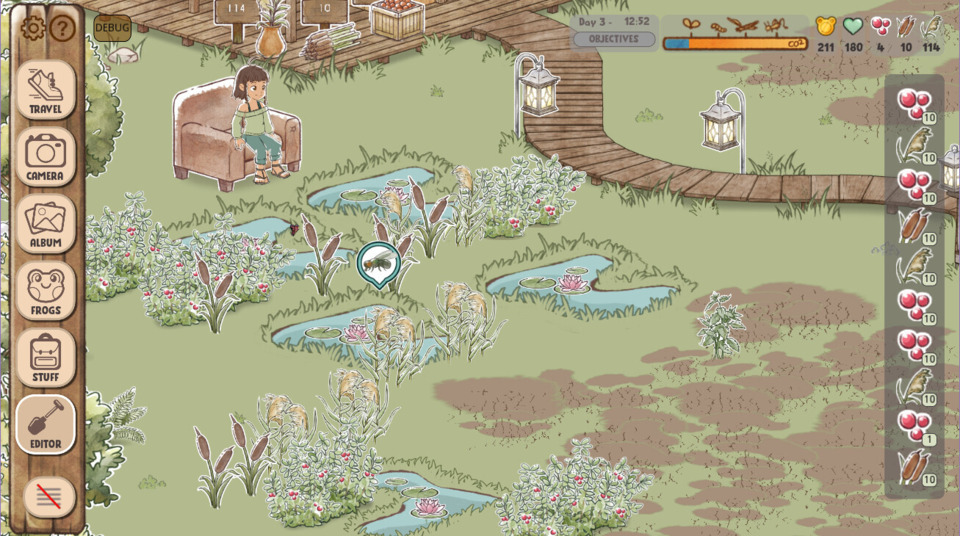
What is it?
Kamaeru Frog Refuge is a frog-raising simulation game with a cozy pace and hand-drawn aesthetic. Kamaeru features a female player character attempting to bond with a male compatriot trying to revive a derelict frog sanctuary. As you assist them, you try to clear out weeds and rocks to make way for a new landscape that will be more inviting to your soon-to-be amphibian friends. The most straightforward comparison to make is to Viva Pinata. Like Viva Pinata, Kamaeru relies on animals passively visiting your park or sanctuary through what you build and create instead of through actions directly done in the immediate or surrounding world. Every species of frog in Kamaeru will only appear in your garden if you plant specific shrubbery or landscape the area a certain way. Even then, the odds of these new species showing up are determined by percentages. Your actions take place in two distinct fields, one where you place objects and plants in a wildlife refuge and another where you collect and craft items to unlock new things to put in that refuge.
What's in the demo?
The demo allows you to interact with a handful of storyline missions before it caps what appears in your game. Through a tutorial, you understand how to attract new frogs to your pond and craft new items and furniture, leading to new amphibians. The game also sports a day-night cycle, with your character unable to perform specific actions at night. Like Viva Pinata, the game divides your actions into different screens, though Kamaeru only appears to have two areas you need to worry about. The first is the actual wildlife sanctuary, wherein your ability to clear it out and plant new flora or place new objects requires you to budget energy resources or action turns. The other screen is where most of your crafting and resource collection occurs. On this second screen, there's another pond where you can plant even more flora to unlock berries and bugs that allow you to level up your character and spawn new items or tools that make way for entirely new types of frogs. You can also craft sellable goods here so you can purchase new items. Still, within the first ten to twenty minutes, you discover around a half-dozen currency types in Kamaeru, each with a different pathway you need to interact with to get more of it.
There's also a breeding mechanic in Kamaeru, but I will caution that the demo limits what breeds will appear in your game so severely that the mechanic doesn't make the best first impression when you play the demo. To unlock new colors or patterns of frogs, you need to interact with a Punnett square and place previously unlocked frogs to unlock new recessive or dominant variants. This process is made incredibly more challenging as your ability to place things where you want to is limited thanks to the game having half of your possible turns taken by a computer meant to represent "natural selection," which almost always works against your favor in that it actively attempts to limit your ability to unlock new things. If you forgot this part of middle school biology class, this part of the game is incredibly frustrating, but that's not all! As you collect raw materials, which include berries and other plant-based resources, you can craft them into goods that are sellable in a local farmer's market. However, the amount you produce is determined by your ability to perform a minigame, though even if you fail at these minigames, you'll still net a nominal amount of goods to sell. These minigames are, bizarrely enough, displayed in a small window at the bottom of your screen, which makes it occasionally tricky to figure them out the first few times you play them.
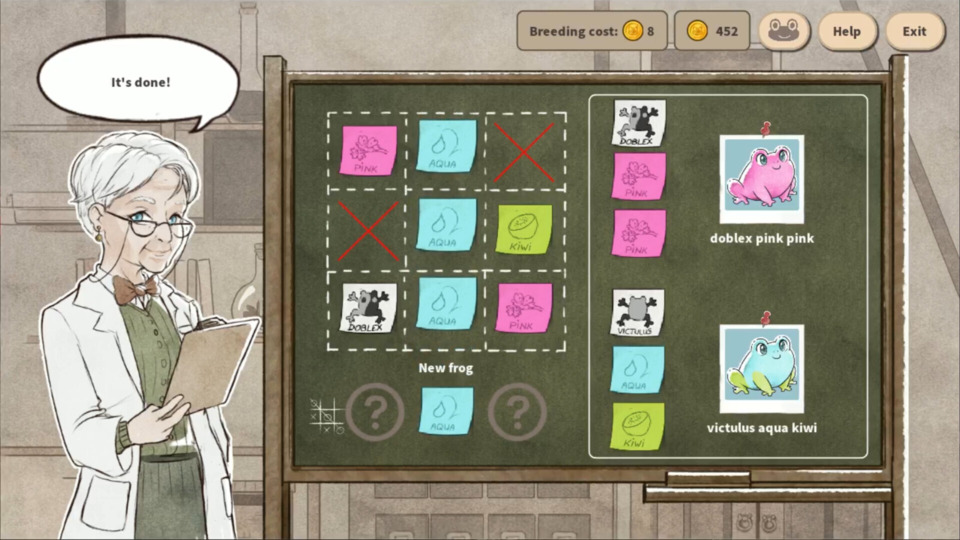
Will I buy the full game when it comes out?
Probably not. Looks can be deceiving, and Kamaeru is a cozy-looking animal-rearing game that commits the same cardinal sin as Viva Pinata. Despite its presentation suggesting that it is a breezy experience with waves of new content that will unlock at an easy enough pace, it's shockingly stressful. Throughout the demo, I felt like I needed to think about how to budget my time and actions before the end of the day, and with so many different systems that opt you into other currencies or upgrades, remembering how to do that isn't as easy as you'd expect. For example, one of the unlockable frog sub-species requires that you have a specific plant that only unlocks after you have collected three flies. These flies will only spawn in the second pond and require you to clear out space to grow a specific plant you can only get after you have sold enough goods in the farmer's market. However, that means you need to grow berry bushes, which spawn berries that you need to click, one at a time, to nab and then refine into candies and jams via a minigame. With barely a quarter of the game's content unlocked after my hour playing it, I felt dizzy, considering how careful I had to be about what I was doing and which plants and items I needed to grow and place in finite spaces across two screens. I genuinely worry that this will get frustrating and overwhelming in record time with the full version of the game.
Tales of Kenzera: Zau
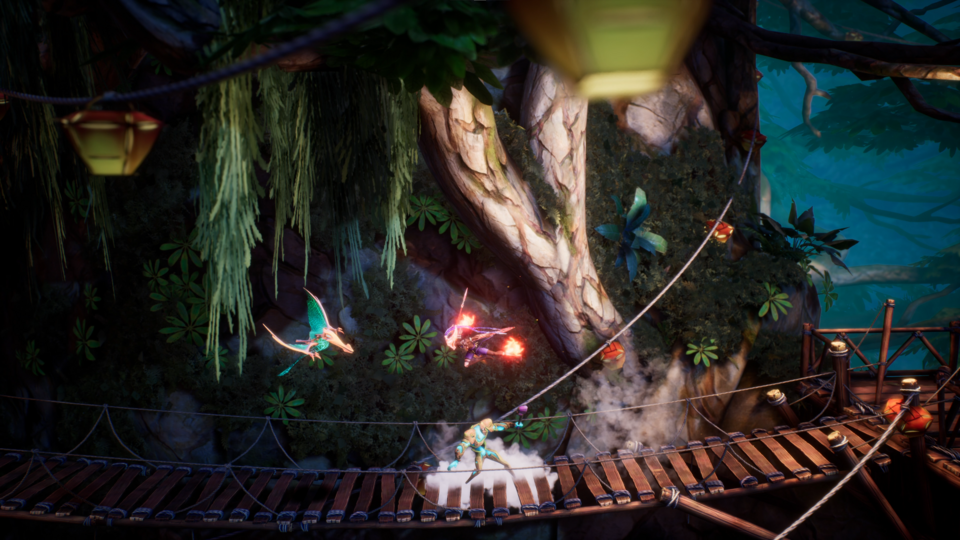
What is it?
Tales of Kenzera Zau is a game project led by actor Abubakar Salim, whom many of you might know as the voice behind Bayek in Assassin's Creed Origins and the father in the TV series Raised by Wolves. Salim set out to try to depict Bantu culture with Tales of Kenzera: Zau as well as convey his own experiences with death and grief following the passing of his father. Tales of Kenzera is a 2.5D Metroidvania wherein your character, Zau, is trying to kill three monsters as part of a ritual which will permit the god of death to bring back his father. Zau is gifted two masks, a Moon Mask and a Sun Mask. The Moon Mask will enable him to shoot projectiles and attack enemies from a distance, whereas the Sun Mask is a melee-focused brawler. Each of these masks can be upgraded, and you can switch between them without restrictions. While you help Zau navigate their surroundings in hopes of finding the three legendary monsters, you will need to shift platforms, dash into crevices, and wail away at enemies that populate the world. You know, your average Metroidvania stuff.
What's in the demo?
First, I must come clean and admit that I played Tales of Kenzera on a mouse and keyboard set-up, which the game advises you against. Also, while playing the game, I got a game-breaking glitch that ruined my playthrough and was only solvable if I started a new save from scratch. While trying to push a block so my character could navigate to a new platform, I caused the block to fly out of the screen and become unusable. Those two points aside, I still had a good time and have to join the rest of the gaming community in applauding the game's developers for lovingly depicting an under-represented culture and world experience. I LOVED how your character's relationship with the god of death was not an immediately negative one. Instead, Tales of Kenzera depicts a culture that views death as inevitable. Zau's struggles to come to terms with his father's passing are also incredibly relatable and wonderfully told. Obviously, the god of death has an agenda, but the life lessons and parables you experience are true highlights, and I did come away from the game wanting to see where this story goes.
Nonetheless, I wasn't super enthused by its core Metroivania mechanics and feel it wears thin even within the scope of its demo. The combos are relatively simple, and transforming between the two forms is much less dynamic than I thought it would be. The Moon Mask shoots projectiles, and the Sun Mask is melee-focused. While some areas and enemies encourage you to use one mask over the other, it's a basic rendition of the Ikaruga's dueling colors mechanics, with you almost always being able to skew towards whatever playstyle you prefer. Also, with each of these masks sporting its own upgrade paths, I hope and pray that the developers took the time to balance things because it would be shitty if you spent most of your time opting for one mask and the game punished you for that. I have my fingers crossed that there will not be a moment when the game starts kicking your ass because you have entered an area or found a boss that requires one over the other. Luckily, the upgrades are exciting and change how you approach combat and non-combat scenarios, adding an extra layer to the gameplay. Nonetheless, the 2.5D environments are pretty vanilla, and the puzzles, from what I played, are nothing to write home about.
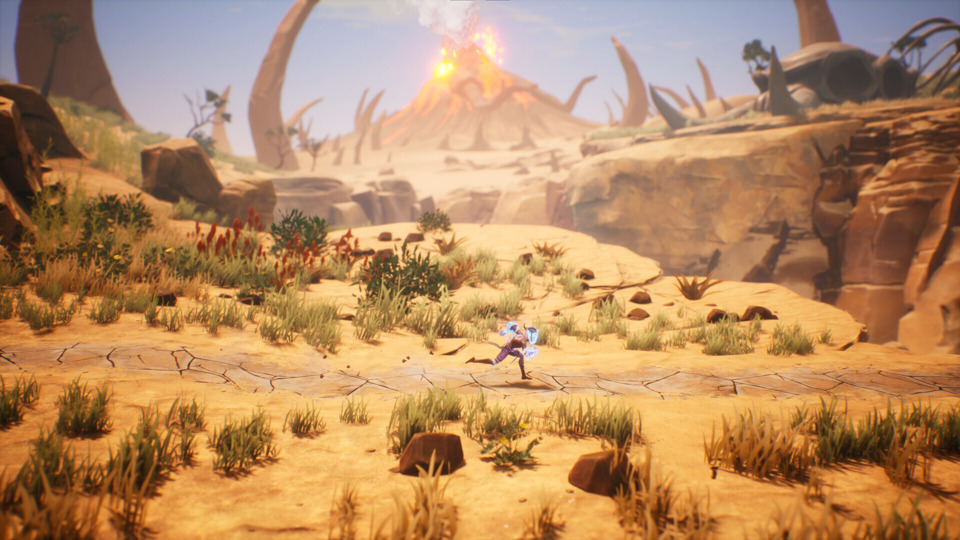
Will I buy the full game when it comes out?
Maybe. Tales of Kenzera is a game I will withhold my judgment until it launches, and I can read some reviews on how it shaped up. The demo is fine from what I played, but it was sometimes rough around the edges and lacked some of the gameplay depth that makes Metroidvanias able to sustain your attention for hours upon end. I'm most concerned about how Tales of Kenzera's endgame will pan out. Even within the demo, the combat started to feel mindless, and what impeded by progress, more often than not, was the platforming, which I did not enjoy. Again, that might stem from how I played the game, which I am willing to accept, but there's a floatiness to Zau's jumps and dashes that felt wrong, especially in a Metroidvania. There's also a linearity to Tales of Kenzera, which I did not mind, but it does feel like the game railroads you along a critical path more so than most games of this type. Nonetheless, with the game's heart in the right place, and considering it is a first-time project for its creative lead, I'm still willing to maintain an open mind should the final product prove all of my concerns or complaints wrong. I cannot help but root for this game.
Ultros
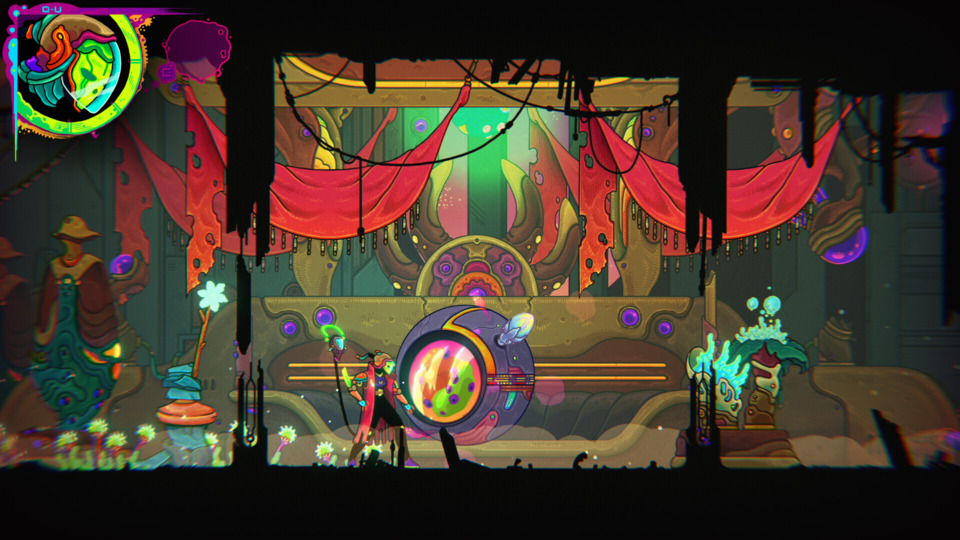
What is it?
Ultros is a Metroidvania game on acid. It features psychedelic visuals while you explore an alien planet with wildlife that looks like nothing you've ever seen before. As you explore your surroundings, you discover your character gains new abilities and upgrades through eating plant life and defeating bosses. When combating enemies and bosses, the game provides bonuses to your kills should you use precision-based attacks or stealth maneuvers rather than if you defeat these enemies through direct combat. Power-ups and new abilities are also unlocked by planting seeds on the planet. As this is a Metroidvania, there's plenty of platforming to be done, and your expected dead-ends only unlock if you have a specific ability when butting up against that barrier. However, Ultros is a Metroidvania with a trick up its sleeve. Now, I will warn you that this "trick" is a bit of a spoiler, though the game lays this out to you before the end of its opening act. So, be warned if you decide to read any further. I can only discuss this game if I can go beyond saying that its graphics are evocative and stunning or that it has your typical Metroidvania ability collection systems.
What's in the demo?
Ultros's core Metroidvania trappings are solid, and your ability to draw levels from in-game actions is a refreshing change of pace. However, the big kicker with Ultros is that it is a game set in a time loop. This twist is only briefly touched upon in the demo, but when you "complete" the tasks and goals with any given day or setting, the game resets and thrusts you back to square one, with none of your previously unlocked abilities you just started to wrap your mind around available anymore. In the first playthrough, you get the double jump rather quickly, but that ability is ripped away from you after you complete the first chapter, and for the next one, collecting it is not as immediate as before. However, the environments and levels warp and wobble to match the subsequent placement of tools at your disposal while also making way for new ones. The time loop element is also where the plant seed mechanic comes into force in both a good and bad way. On the one hand, seeing your actions mean something significant as you progress through the story is incredible. On the other hand, those seed planting locations are rough. If you forget to do things at the earliest opportunity, you do a lot of backtracking to place a singular item in a faraway location. Ultros is a Metroidvania game that requires a lot of patience and won't be everyone's cup of tea as a result.
I'm on the fence about Ultros. You eventually get the ability to create platforms, which allows the game to throw the Metroidvania game design manual entirely out the window, and the times when Ultros deviates from your expectations are incredibly freeing and awe-inspiring. Nonetheless, many of its freeing moments stem from you breaking plants or picking up trinkets in one timeline and applying it to a part of the environment so a wall or impediment will disappear. What you need to use and where is not always clear, and the game devolves into trial and error more than I'd like. The game's fast travel system is even more groan-inducing because unlocking more than the few freebies it provides requires you to collect soil and apply it to areas with the space to make way for new plant life. But the game almost lost me when you needed to manipulate the plants as they grow. The clearest example comes when you enter the Greggamoja Refinery, where you have to use your character's spray ability to bend a plant's stems so it grows along with a stream of water. It's incredibly frustrating, but it does play into the game's overall environmental themes and the recurring storyline that your character needs to bring life back to a diseased planet.
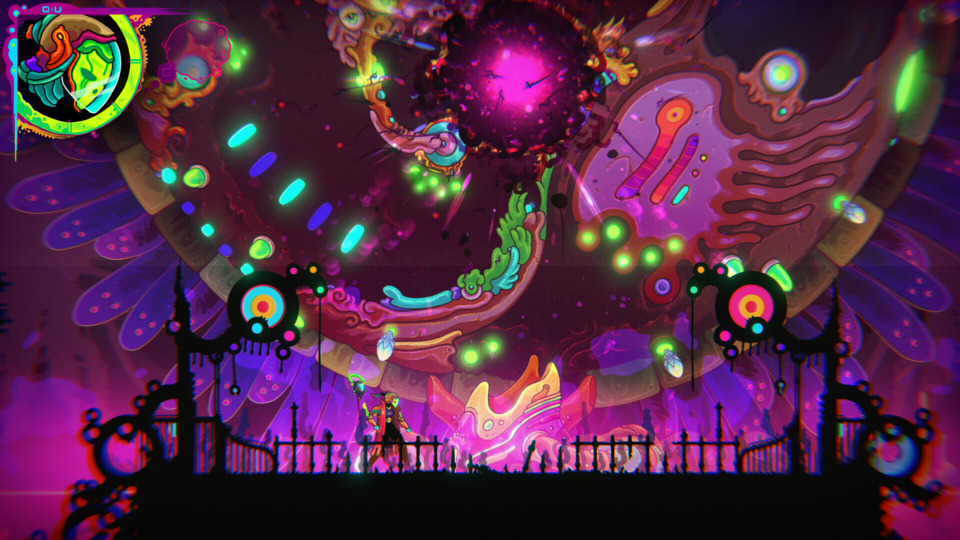
Will I buy the full game when it comes out?
I have already purchased this game, but I want to share some caution with those interested in picking it up. This next point is a nitpick, but Ultros's sometimes monochromatic look was a problem for me. Especially in the starting forest and hub world, parsing out what objects and things are a part of the foreground and background was difficult. When the game transitions to its less bright environments, this problem completely dissipates. Still, sometimes, I lost track of gobs of meat or materials because they blended too closely with the surrounding environment. That aside, I loved this game. I enjoyed how the upgrades largely stem from your feats in combat rather than entirely being locked behind tracking down trinkets. The game has an incredible look, and the variety of locations and environments is stunning. There's something about the game that gives me Fantastic Planet vibes, with the aliens you encounter and their exotic culture and ways of life being a real trip. The time loop element also mixes up what would be a vanilla Metroidvania experience. The first time I lost my powers, I felt dispirited, but when I realized the game had plenty of new tricks and tools to try out with every reset, I started looking forward to the next time loop. As intended, finding out the latest "mechanic of the week" is the best part of Ultros. Now, if only some of those plant seed locations were not a complete pain in the ass.
Children of the Sun

What is it?
Children of the Sun is a third-person puzzle shooter from indie game developer René Rother, whose previous work includes being the lead 3D artist behind El Hijo: A Wild West Tale. Children of the Sun is an often abstract mix between the sniper-based puzzle boxes of Sniper Elite and the grindhouse sensibilities of Robert Rodriguez and Quentin Tarantino. With each level, you are presented with a half dozen or so targets spread across a field or building complex, and using your character's unique abilities, which grow over time, you must take each of the targets down with a single bullet. The targets are displayed as glowing outlines of bodies, similar to how bodies look in Superhot and will move as you aim and eventually curve and pivot your bullets. As if this paragraph were not already chock full of comparisons to other games, when you complete a level, you discover your performance and ability to explode objects in the environment and assassinate targets in quick succession doll out points, which are ranked across global and local leaderboards which gives Children of the Sun a Neon White element that drives you to replay levels.
What's in the demo?
The demo provides the prologue and a set of levels from what I assume is the game's first chapter, which serves as a tutorial of sorts. Things start simple enough: you need to shoot bullets from distant positions and hold your controller buttons or mouse clicks to cause the bullet to bob and weave around objects so it can strike every single target in a given level. As you play, you learn how to bank shots and do other flourishes, which quickly become necessities in not just wracking up more points but completing the levels in the first place. The use of global and local leaderboards is a nice touch. Like Neon White, your desire to push your score up just a few more points leads to organically testing new strategies and exploring alternate vantage points. There's also a story about your character wanting to enact vengeance on people who wronged her, but the demo only deals with vagaries between your puzzle combat arenas. The comic book cutscenes in the demo are there even if they don't accomplish anything beyond setting the tone.
What I am less enthused by are some of the unique abilities. Due to the game's minimalistic art style, the visual clues and prompts that guide your actions outside of the tutorial could be better. It's sometimes not immediately apparent when certain skill shots and abilities are tantamount to a successful assassination. After completing the demo's tutorial missions, I was occasionally lost in looking at the placements and movements of enemies on a field and brute-forcing what I needed to do or what was even on the table. Sure, that's part of the game's charm. Still, I wonder if things would be better if explosive objects were highlighted in one clear color and signs that communicate the need to curve or pivot bullets in another. Over time, you get more comfortable playing with the game's tools, but within the demo, I started to feel slightly overwhelmed by the speed at which the game introduces new things. The fact is the game doesn't stick with abilities long enough for you to build what I call proficiencies. Rather than juxtaposing one cool thing to another, the abilities should have several tailor-made set pieces that make players comfortable with the new rules they are butting up against.
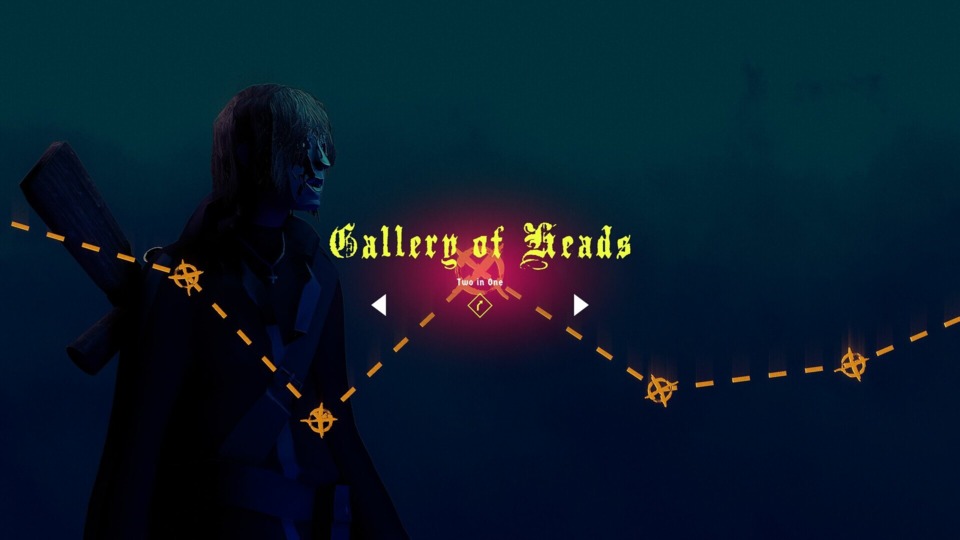
Will I buy the full game when it comes out?
Maybe. This next point might sound a bit "mean," but this might be the most Devolver-ass video game of 2024. Between the game's minimalistic but evocative look, grindhouse-inspired cutscenes, and highly satisfying combat, it feels like something that bleeds Devolver's DNA. As suggested, I felt some frustration as I drew closer to the end of the demo, but not to the point where I wanted to dismiss the game outright. Likewise, with such an exciting world and premise, I hope there's more to the game's narrative underpinning than you being on a revenge tour to fight against the people who murdered someone close to your character. Beyond that, I genuinely wish Children of the Sun had remained committed to new mechanics and maneuvers for more than one level before transitioning to something new during its opening act. I still am not great at banking shots and struggle to tell apart explosive and assassination-ending objects. But that said, I'm not going to sit here and deny that I did not replay levels in hopes of jumping up one or two spots on the game's leaderboards, as was the case with Neon White.
Log in to comment